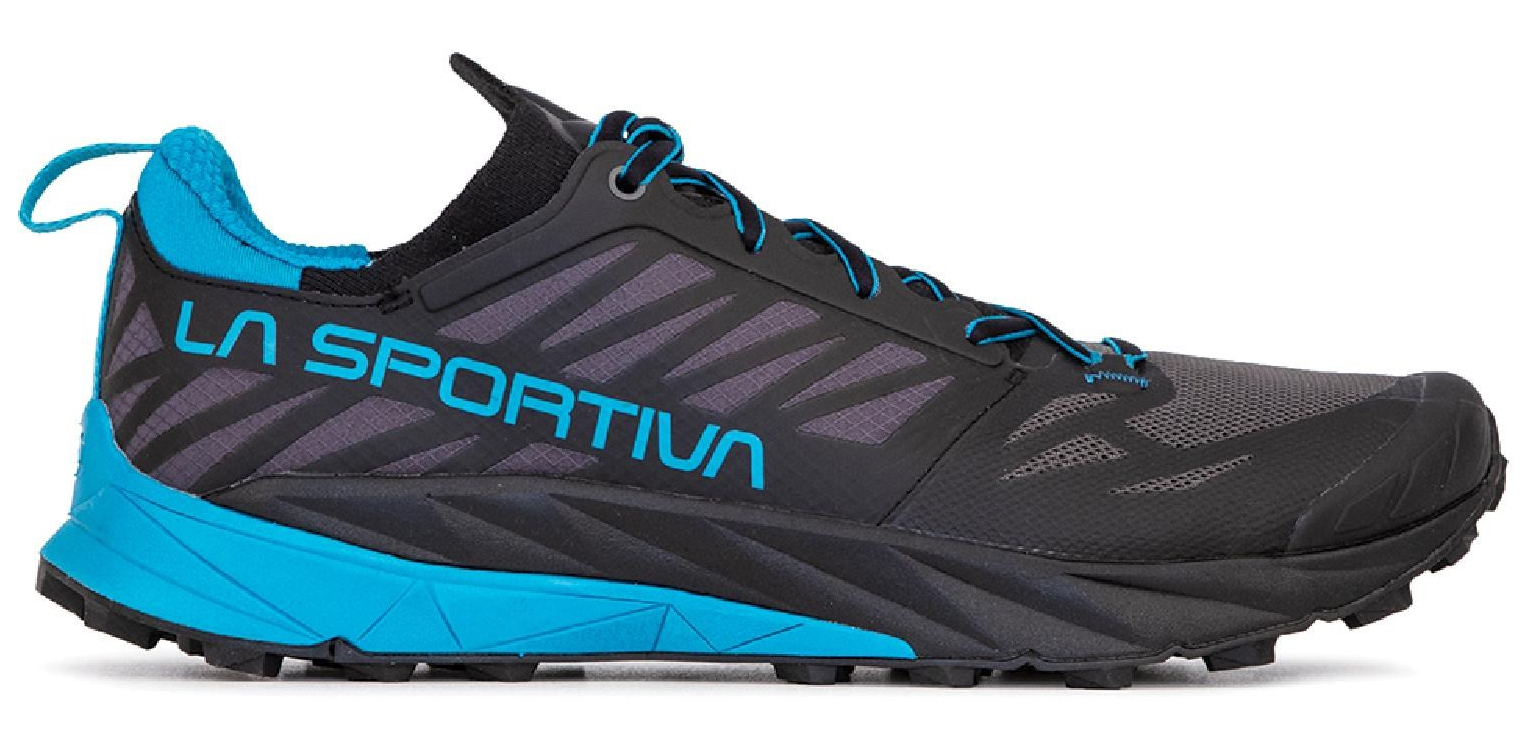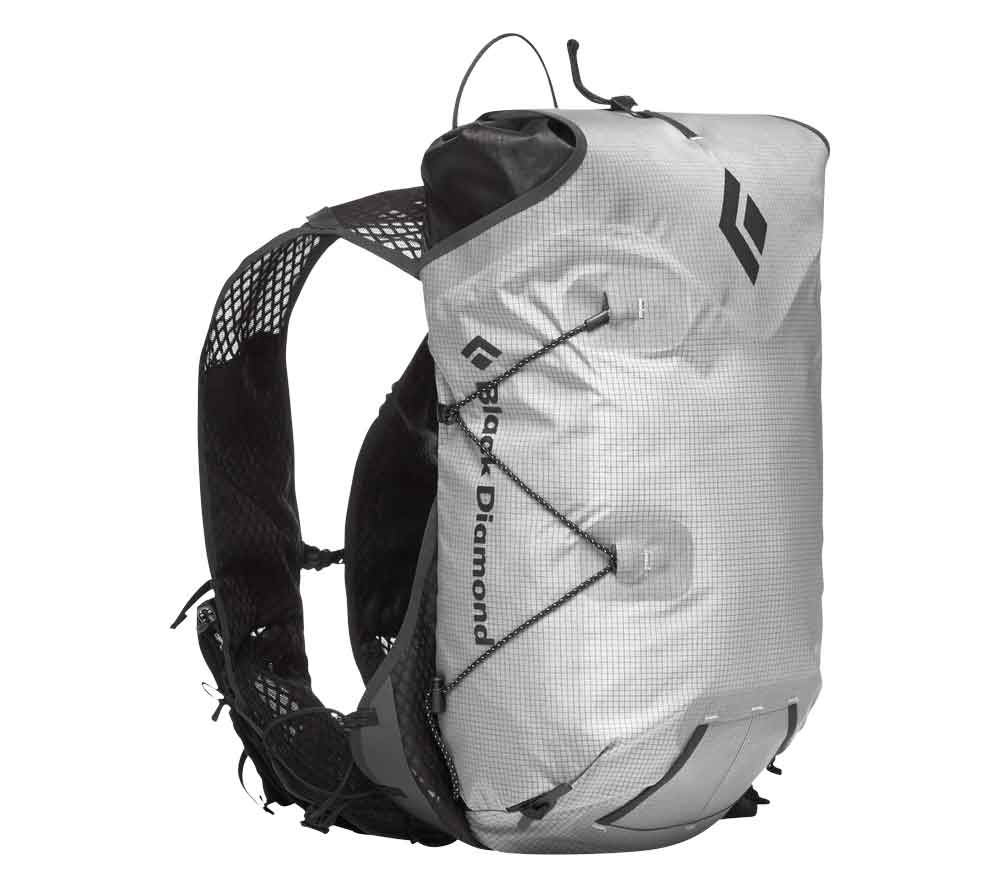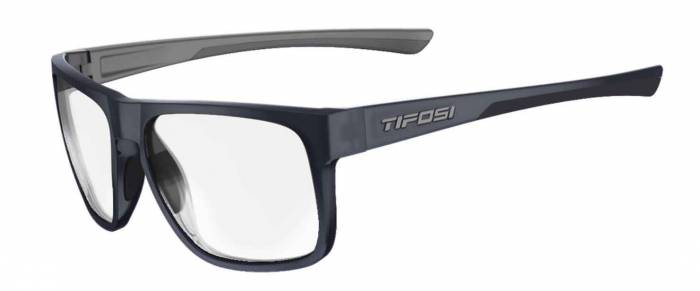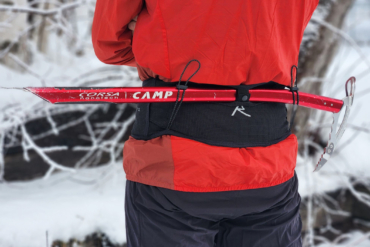Team GearJunkie jumped back into the sport of adventure racing this year, competing in a National Championship event that required 30 hours of wilderness navigation and a kit of specialized gear.
It’s a few minutes after dawn, and teams huddle over maps at the edge of Lake Namekagon. My headlamp beam highlights topo lines and tiny features on an orienteering map, a swath of green ink signifying the deep Wisconsin woods in which we’ll soon be immersed.
“Forty minutes to race start!” a voice booms over the crowd. The United States Adventure Racing Association (USARA) National Championships has pulled competitors from around the country, 55 teams in all. Over the next 30 hours, we will navigate to dozens of checkpoints via bike, canoe, and trail running shoes, more than 100 miles to the end.

Adventure Race Championships
I took up adventure racing in the early aughts, the sport catching my attention as an ultimate test for both physical performance and gear. No other pursuit combined wilderness navigation, team strategy, and a fast-and-light ethos that required the best equipment across multiple disciplines outdoors.
This year, after a hiatus since 2013, I jumped back into AR. It started with a solo race in June, including 28 hours alone in the woods where I only occasionally saw another team. (I had a blast!)
Then, as the summer progressed, I teamed up with another GearJunkie employee, Kyle Nossaman, and a biking friend, Ryan Braski, to get official and form a squad aiming for the National Championship race.

Over two months we trained, raced, and dialed in a kit of gear for the event. We tested packs, trail shoes, and mountain bikes. But we also leaned into the weird gear that comes with this sport, including thumb compasses, map cases, and orienteering tights.
Glow sticks were mandatory gear (for on-water illumination in a canoe). And I showed the team a blister-preventing salve called Bag Balm, which I’d used on my feet for years while racing around the world.
The USARA required a list of products to be on-person at all times. This “mandatory gear” is for safety and efficiency in the woods and on the water. My team spent weeks testing combinations of gear on training rides and informal AR courses we built near home.

The final splay of gear, an explosion of cutting-edge as well as long-trusted equipment, was packed into bins and bags before we drove north in September. We then had a day at the race HQ for final tweaks, and it was off to the start line on a Friday morning as the sun came up.
30 Hours on the Course
The race pack left Lake Namekagon in a fury at the “Go!” We set off clutching maps and sucking water from pack hoses, sprinting into the woods in multiple directions based on team strategy on the choose-your-adventure course.
The next day was a blur. We battled old-school singletrack on the renowned CAMBA mountain biking trails. Orienteering sections tested our map and compass skills. In a canoe, we paddled 25 miles of flatwater in waves and wind, nabbing checkpoints placed around a large lake.
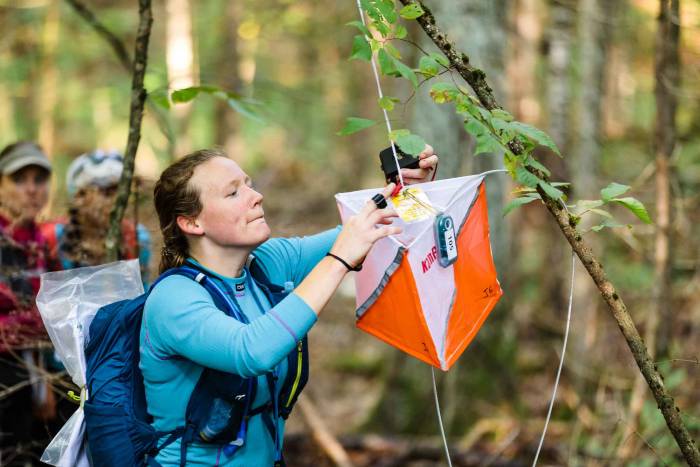
The race went from just after dawn until dusk, and then straight through the night. No one slept and, in fact, we hardly paused for more than a couple of minutes during the whole race.
Our headlamp beams cut a path through the long night. Each team was required to stick together, pushing through sleep deprivation on an inky overnight with bright stars and a hint of moon.
Dawn came in the midst of a multi-hour orienteering section. We were entangled in a system of tracks near Mount Telemark and the famous Birkebeiner Trail. I switched off my headlamp as the first rays of sunlight cut into the woods.

To the Race End
We ended the event with a biking leg, a fast hour of pedaling away from Telemark and back toward race HQ. It’d been an effort heavily brokered on map-and-compass navigation, the hidden checkpoints — 56 in all — proving difficult for most teams to clear in the allotted 30 hours of race time.
The winners, Team WEDALI, included Team GearJunkie alumnus Justin Bakken. They nabbed all checkpoints and rolled across the line at 24 hours, 45 minutes, claiming the National Championship team spot. My squad managed a respectable 47 checkpoints to place 13th overall.

Training and teamwork got us from the start line, through the forests and the long night and, finally, to the race end. The gear we used, highlighted below, was key as well. Without an efficient kit, proper hydration, calculated nutrition, and gear staged ready at transition areas, we wouldn’t have made it 100+ miles across the waters and through the Wisconsin woods.
We were beat at the end, eyes heavy and legs destroyed. But our squad was also psyched, and I was reinvigorated on AR. This is a one-of-a-kind sport, and it is an ultimate test for all kinds of gear.

Gear Breakdown: USARA Championship Race
Vollebak Carbon Fibre T Shirt
Adventure racing can destroy clothing, especially when bushwhacking through thorns and thick brush. Because of this, we decided to try something unique for our team top — a T-shirt made with carbon fiber!
Vollebak is known for its outrageous product ideas, and the Carbon Fibre T Shirt ($110) aligns with the company’s “future of clothing” ethos. But the top is no gimmick. And after testing it for a few weeks before the race, we wore it at the USARA event. Overall, we were happy with the shirt’s performance.

The shirt uses a stretchy fabric, including elastane and polyamide materials and “over 120 metres of carbon fibre,” according to the company. The result is a beefy shirt that feels almost like a rash guard — it’s thicker and stronger than any normal T-shirt.
But it breathes and wicks sweat like any good synthetic top. The carbon fiber strands are small and blended into the other fabrics, but they add significant strength and abrasion resistance as you run through the woods.

Beyond this shirt, I wore pants (not shorts), thin running socks, and a GearJunkie cap. Most adventure racers do not change clothes during a race, meaning the team uniform needs to function across multiple disciplines and be comfortable for hours.
Some racers wear a chamois-pad-equipped bike bib under their race clothes. I simply wear pants with lightweight merino wool underwear; it’s a comfortable setup that I can run, bike, and paddle in without issue.
The Guide Pro Pants ($80) from Eddie Bauer First Ascent are a solid choice. I wore them for a few races this summer, and the light nylon is comfortable even in hot weather, but it protects my legs when bushwhacking for miles in the woods. They have an athletic fit and multiple pockets, which is nice for stashing necessities like lip balm, a compass, as well as directions, clues, or a small map.
Finally, for outerwear, my team packed the Pearl Izumi Monsoon WxB Pant ($125) and Jacket ($150). The USARA required waterproof layers to be carried at all times during the National Championship. These made-for-biking shells have hoods that cinch over helmets and they fit close. They are light and pack up small, taking only a tiny space in our packs, but ready to shield from the elements if the sky opens wide.
La Sportiva Kaptiva Shoes
I like a fast, minimal shoe for AR. The Kaptiva ($139) is light at about 9 ounces per foot, and the fit and feel are precise. The shoe flexes and grips on the trail and in the woods. The tacky outsole rubber is formed with svelte but effective lugs. Heel to toe, the shoes drop 6 mm, which I appreciate for speed and comfort on road or trail.
The company touts “protection, cushion, stability, and traction” with the shoe, and after more than 200 miles on these shoes during the race and training, I agree. It runs fast with its knit upper and close fit.
That said, this is not a good shoe if you have wide feet. The form is narrower than average, and my wider-footed teammates went with the also-excellent Karacal model for that reason.
Check Price at REICheck Price at Amazon
Black Diamond Distance 15 Backpack
Small and sleek, this vest-style pack was made for mountain running and climbing alpine peaks. But the Distance 15 ($150) is an apt choice for AR, too. The fabric is the same UHMWP (ultra-high-molecular-weight polyethylene) the company employs for some of its quickdraw slings and other climbing hardware. It can stand up to anything an adventure racer will throw at it.
It weighs almost nothing when empty (13.89 ounces). With just 15 L of capacity, we were pushing the edge with this pack — it just fit all our equipment for the various stages of the race. The comfortable vest-like harness has pockets for food, a compass, and other necessary grab-quick items. I packed nuts, gels, Honey Stinger bars, and a variety of dense energy-food items to eat while on the move.
The main pocket opens quickly via a hook-and-eyelet on the lid. Inside is a drawstring closure and an open pack body with a separator for a water bladder. It is water-resistant, meaning only a full submersion would likely soak the pack contents.
Check Price at BackcountryCheck Price at Amazon
Cannondale Scalpel Carbon SE LTD

A bike for AR needs to be lightning fast and able to handle singletrack as well as long sections of two-track and roads between checkpoints and transition areas. In years past, for my mountain bikes, I defaulted to speed over performance on rugged trails. And my racing steeds were feathery XC machines that could paceline at 20 mph or more for long stretches on gravel roads. When the rocky singletrack sections came, I’d just deal with it on the hardtail frame.
My bike this year, the Scalpel Carbon SE LTD, “balances XC race geometry and precision with the vibes of a trail rig,” the brand touts. That summary is apt, as the 29er offers full suspension and a light-ish (24 pounds in size L) ride that can move consistently fast through all kinds of terrain.
It costs a healthy $8,300. For that, you get a “World Cup fast” bike that can also handle all-mountain trails. Turns out, the mountain biking during the Nationals race was custom made for this bike (or vice versa): The CAMBA system near Telemark is difficult, rocky, and relentlessly up and down. Some of the trails we were routed onto were old-school, slow, and serpentine through boulders, loose rocks, and constant roots from deep woods pushing in at all sides.
The Scalpel Carbon was like a magic carpet ride for this race. The SRAM X01 12-speed drivetrain gave seamless shifting. The Lefty Ocho Carbon 120mm fork and RockShox SIDLuxe Ultimate suspension soaked up the bumps and let me focus on speed and control.

The bike certainly has more features (and thus expense and weight) than my AR bikes of yore — dropper post, tool stash area on the frame, wheel sensor that connects to an app — but the formula was perfect for the USARA championships course.
Check Price at CannondalePearl Izumi Bike Shoes
We trained and raced in the Gravel X ($250) and X-Alp Summit shoes ($150) from Pearl Izumi. Both shoes offer advantages, with the X-Alp probably being the better choice for racers who are on and off the bike a lot during rough sections.
The X-Alp was made for “all-day mountain bike adventures” and, as such, the sole — a nylon composite with Vibram rubber tread — functions while pedaling and clipped in and also for pushing on hike-a-bike sections. A synthetic leather upper and BOA closure make for a great fit.
A speedier shoe, the Gravel X is lighter and has the basic form of a road-biking shoe, though with SPD cleat compatibility for mountain bike pedals. This is Pearl Izumi’s premium gravel-biking shoe, and the light and stiff nature plays well for adventure racing, where often the riding sections are on two-track and gravel roads.
I love the close fit of the Gravel X. Its carbon sole offers efficient power transfer, and the knit upper with BOA Fit System is minimal and perfect. A rubber tread on the sole allows you to get off and push the bike or run into the woods and nab a checkpoint. If you want an MTB shoe made for speed, take a close look at the Gravel X.
Check Gravel X Price at Pearl IzumiCheck X-Alp Price at Pearl Izumi
USWE Hajker Pro 24

The Hajker Pro 24 ($270) has a unique harness system made to lessen the bounce of a pack on your back while running and biking. One of the Team GearJunkie racers used this pack during the Wisconsin race.
After adjusting the torso height, tightening the waist belt, and optimizing the placement of the chest buckle, the patented harness technology began to reveal itself. Whether the pack was mostly empty or full of gear, it stayed in place through hours of trail running, mountain biking, and paddling.
When loaded up, the pack’s weight is distributed evenly across the chest and hips with the integrated waist belt. With elastic straps running diagonally across the chest and not vertically, neither sore collar bones nor nipple chafing occurred during the USARA’s 30-hour stretch.
The pack comes with a removable inner dry sack, and the main compartment seals with a roll-top closure, making it waterproof. The waist belt has hip pockets for bars and gels. Other small pockets, including mesh water bottle pockets, keep essentials like maps and extra layers easily accessible.
One qualm we had: The Hajker Pro is a bit cumbersome when you need to access gear from the main compartment — it’s required that you latch and unlatch bungee straps before unbuckling the main opening, unrolling the pack, and then accessing gear.
But overall, the USWE (pronounced “you-swii”) pack proved a good fit for AR. It is plenty durable, escaping hours of training and the race with only surface scratches. And the strange harness system worked — ultimately, the pack was all but forgotten, loaded with mandatory gear, and staying in place through all sorts of terrain on the long course.
Check Price at BackcountryCheck Price at Amazon
Tifosi Swick Glasses
Optics for the sport need to protect the eyes and offer sharp vision both for moving through the woods as well as reading minor details on a map. After years of testing glasses for AR, the Tifosi Swick frames were a solid find.
The rugged, sport-oriented sunglasses come with the option to have a clear lens. While not ideal in bright sun, I like the clear view for this sport, because interpreting topo lines and nuanced detail on a map requires a very clean view.
For race day, I went with the Swick model with the “Satin Vapor” color frame and clear lenses. The lightweight Grilamid frame is strong enough to take all the knocks this sport threw at it. Hydrophilic nose pads keep the glasses in place no matter how much you sweat. The lenses, a shatterproof polycarbonate, were clean and clear and matched my prescription perfectly.
I used these glasses throughout the 2021 season and at the Nationals race. The glasses held strong and were comfortable for hours of constant wear. Finally, these glasses are a good deal. The frame is just $25, and prescription lenses start at about $100.
Check Frames Price at BackcountryCheck Frames+Lenses at Tifosi Optics
Garmin Enduro

The 2021 USARA National Championship was the first adventure race that sanctioned the use of Garmin’s Adventure Race activity mode. Available with software version 19.10 or 19.20, the Adventure Race activity saves your GPS track plus shares live biometric data, time, altimeter, and compass while disabling features that may be advantageous (and therefore disallowed) to racers like live GPS, distance, and speed.
Garmin’s Adventure Race activity mostly makes sense for GPS watches that have a strong battery life. While the Fenix 6 series and MARQ both could likely last a full 30-hour adventure race, the Garmin Enduro ($800) is the brand’s longest-lasting GPS watch (up to 80 hours of battery life in GPS mode).
One of the teammates wore the Enduro watch and utilized the Adventure Race activity mode. Before the race started, he customized the activity data screen with preferred data points: heart rate, timer, time of day, lap time, and battery percentage.

On race day, after checking in with officials to verify our use of Adventure Race mode, we started the activity. During the race, we found it helpful to track lap times for various legs.
Once we crossed the finish line, after 30 hours of continuous motion through the Wisconsin woods, the Enduro battery life read “27 days remaining.” That’s astonishing, especially considering that a previous Fenix 5 watch we tested only lasted about 12 hours in GPS mode.
Once home, we synced the watch with the Garmin app so that we could analyze our navigation and pace plus upload the activity to Strava or other sites. Read our full review of the watch and the AR mode in The First Smartwatch Approved for Adventure Racing, published last month.

